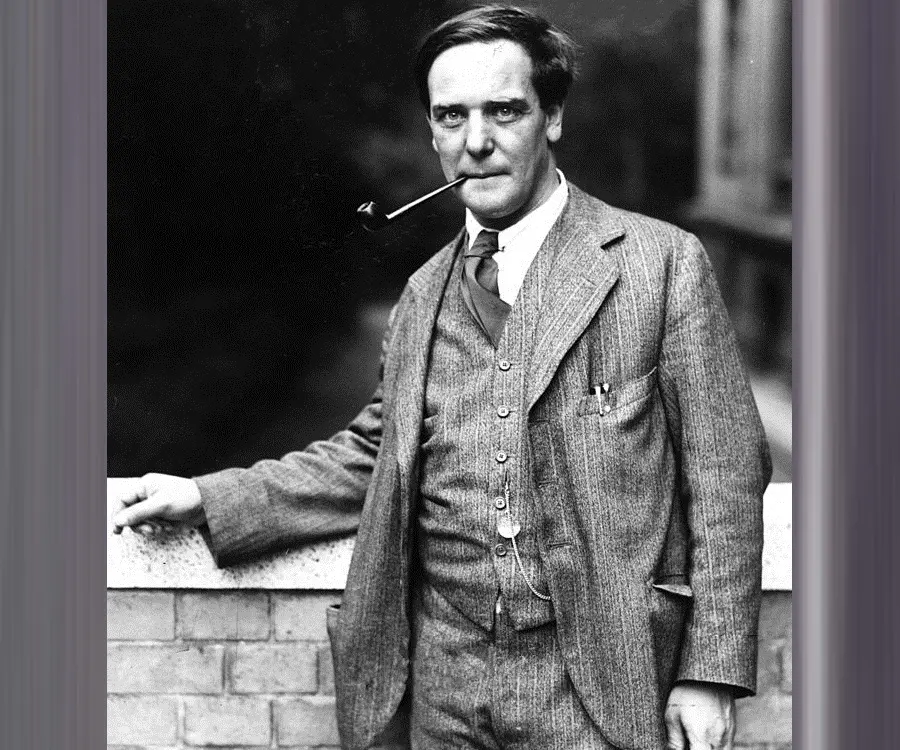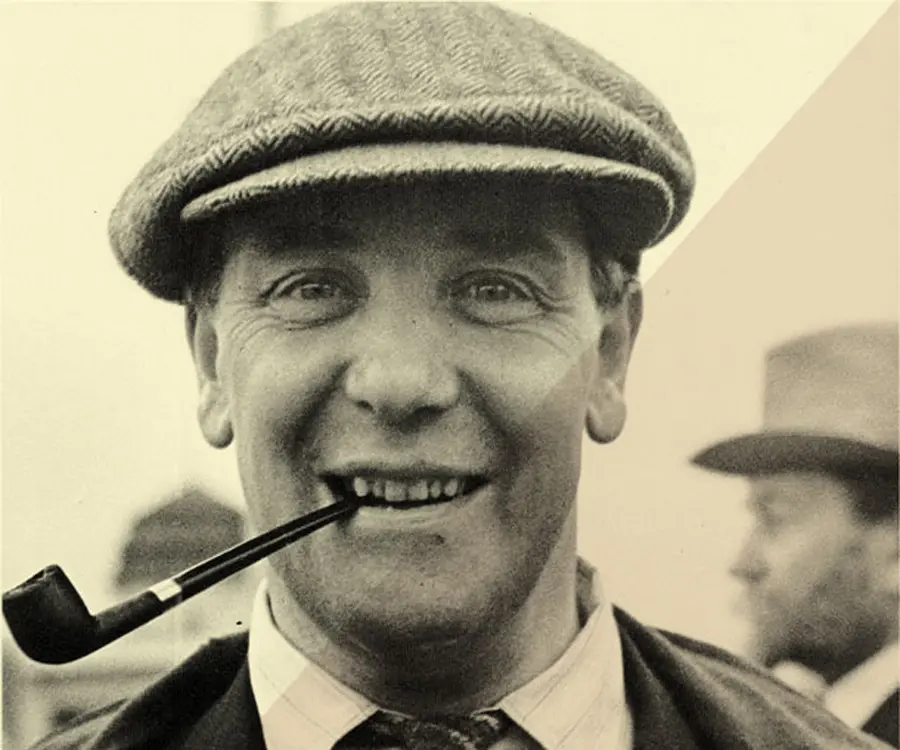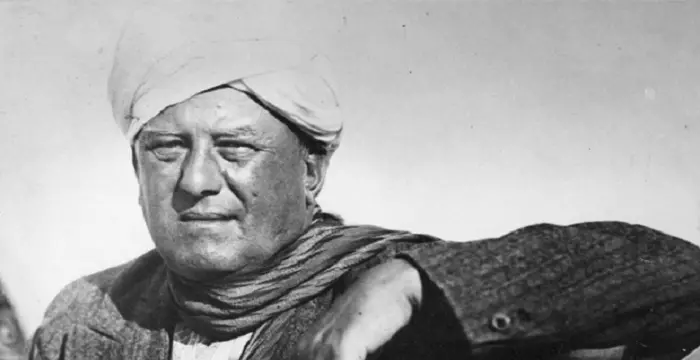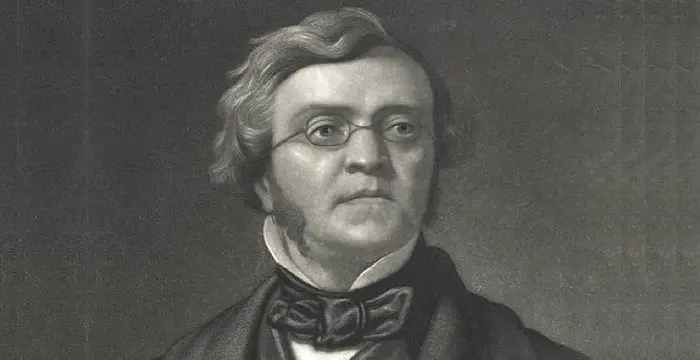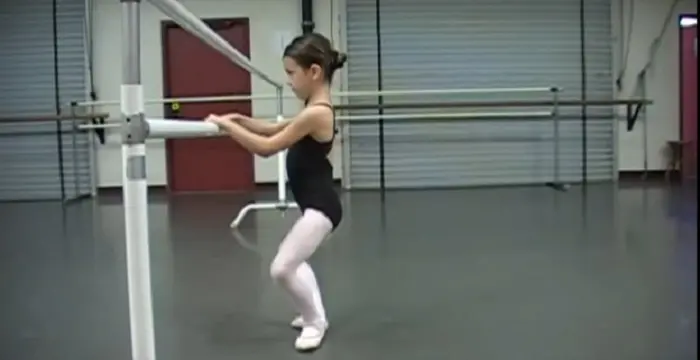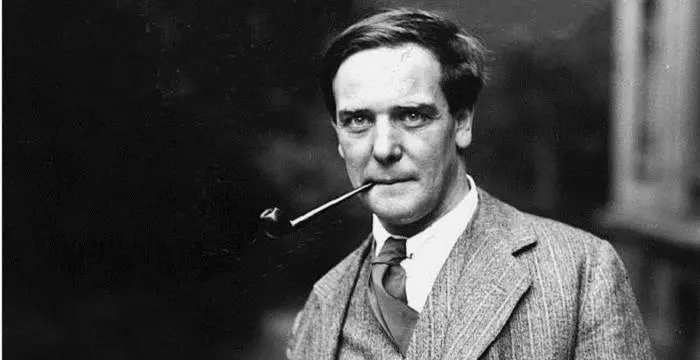
Pyotr Kapitsa - Trinity College, Cambridge, Birthday and Life
Pyotr Kapitsa's Personal Details
Pyotr Kapitsa was a leading Soviet physicist who was jointly awarded the Nobel Prize in Physics 1978
| Information | Detail |
|---|---|
| Birthday | July 8, 1894 |
| Died on | April 8, 1984 |
| Nationality | Russian |
| Famous | Trinity College, Cambridge, Scientists, Physicists |
| Spouses | Anna Alekseevna Krylova |
| Known as | Pyotr Leonidovich Kapitsa, Peter Kapitza |
| Universities |
|
| Notable Alumnis |
|
| Birth Place | Kronstadt, Russian Empire |
| Gender | Male |
| Father | Leonid Petrovich Kapitsa |
| Mother | Olga Ieronimovna Kapitsa |
| Sun Sign | Cancer |
| Born in | Kronstadt, Russian Empire |
| Famous as | Physicist |
| Died at Age | 89 |
// Famous Physicists
Henry Cavendish
Henry Cavendish was a theoretical chemist and physicist, renowned for discovery of hydrogen and calculation of the mass of earth. To know more about his childhood, profile, timeline and career read on
Walter Kohn
Nobel Laureate Walter Kohn was an Austrian-born American theoretical chemist and physicist. Check out this biography to know about his childhood, life, achievements, works & timeline.
Nikola Tesla
Nikola Tesla was a Serbian-American inventor, best known for his development of alternating current electrical systems. This biography of Nikola Tesla provides detailed information about his childhood, life, achievements, works & timeline.
Pyotr Kapitsa's photo
Who is Pyotr Kapitsa?
Pyotr Kapitsa was a leading Soviet physicist who was jointly awarded the Nobel Prize in Physics 1978. Known for his notable contributions to knowledge of atomic structures and understanding of strong magnetic fields at extremely low temperatures, he also conducted a series of experiments to study liquid helium, leading to the discovery of its superfluidity. Born in the Russian Empire during the late 19th century, he grew up in a politically tumultuous environment. He was a meritorious student but his studies were interrupted when the World War I broke out and the boy was forced to work as an ambulance driver for two years on the Polish front. He returned to his studies and graduated from the Petrograd Polytechnical Institute following which he moved to Britain for his higher studies and scientific career. He spent over a decade working in the Cavendish Laboratory at Cambridge, England, where he focused on experiments in nuclear physics and constructed a microradiometer. After he returned to Russia on a visit in the mid-1930s, he was forbidden by Stalin's government to travel back to Great Britain. Thus he spent the rest of his career in Russia and continued his groundbreaking work which eventually earned him a share of the Nobel Prize in Physics 1978.
// Famous Scientists
Juliane Koepcke
Juliane Koepcke is a German-Peruvian biologist, who was the lone survivor among the 92 passengers and crew of the ill-fated LANSA Flight 508 that crashed in the Peruvian rainforest on 24 December 1971. Know more about her life in this biography.
Henry Cavendish
Henry Cavendish was a theoretical chemist and physicist, renowned for discovery of hydrogen and calculation of the mass of earth. To know more about his childhood, profile, timeline and career read on
Konstantin Tsiolkovsky
Konstantin Tsiolkovsky was a Russian rocket scientist and a pioneer of astronautics. This biography provides detailed information about his childhood, family, personal life, career, achievements, etc.
Childhood & Early Life
Pyotr Leonidovich Kapitsa was born on 8 July 1894 in Kronstadt, Russian Empire to parents Leonid Petrovich Kapitsa and Olga Ieronimovna Kapitsa. His father was a military engineer who constructed fortifications while his mother worked in high education and folklore research.
He was studying at A.F. Ioffe's section of the Electromechanics Department of the Petrograd Polytechnical Institute when the World War I broke out and interrupted his studies. He served as an ambulance driver for two years on the Polish front before resuming his studies and graduated in 1918.
Soon he became a lecturer at the Polytechnic Institute where he published several papers. He left the country in 1921 and went to Britain as a member of a scientific mission representing the Soviet Academy of Sciences.
Career
In Britain he met Ernest Rutherford who invited Kapitsa to work in the Cavendish Laboratory at Cambridge, England. The two men formed a productive partnership, marked by mutual respect and admiration for each other. Kapitsa’s initial experiments were in nuclear physics and he developed techniques for creating ultrastrong magnetic fields by injecting high current for brief periods into specially constructed air-core electromagnets.
He served as Assistant Director of Magnetic Research at Cavendish Laboratory from 1924 to 1932. In 1928 he discovered the linear dependence of resistivity on magnetic field for various metals in very strong magnetic fields. He also served as Director of the Royal Society Mond Laboratory from 1930 to 1934.
His final years at Cavendish were dedicated to low temperature research and he developed a new and original apparatus for the liquefaction of helium based on the adiabatic principle in 1934. The same year he went on a regular visit to Russia but Stalin’s government forbade him from returning to Britain and asked him to continue his work in the Soviet Union.
The scientist protested at being forcibly retained in Russia, but he was appointed director of the specially established Institute of Physical Problems in Moscow in 1935 in an attempt to pacify him. He resumed his work and in the late 1930s he discovered the fact that helium II (the stable form of liquid helium below 2.174 K, or −270.976 °C) has almost no viscosity (i.e., resistance to flow)—a phenomenon known as “superfluidity.’
During the World War II Kapitsa was assigned to head the Department of Oxygen Industry attached to the USSR Council of Ministers. In 1939 he developed a new method for liquefaction of air with a low-pressure cycle using a special high-efficiency expansion turbine.
He was appointed to the special committee entrusted with the construction of the Soviet atomic bomb in 1945. However problems arose between Kapitsa and the committee’s political chairman, Lavrenty Beria, which in turn led to tensions between the scientist and Stalin. As a result Kapitsa was dismissed from all of his official appointments, except membership in the Academy of Sciences.
Stalin died in 1953 following which Beria was ousted by Nikita Khrushchev, who gradually restored Kapitsa’s academic (but not government) positions. Kapitsa reclaimed the directorship of the Institute of Physical Problems and retained it until his death.
Over the course of his career Kapitsa taught for several years at the Moscow Institute of Physics and Technology. He was also a member of the presidium of the Soviet Academy of Sciences from 1957 until his death.
Major Works
Pyotr Kapitsa discovered superfluidity in liquid helium in 1937. His works in this field ultimately won him the Nobel Prize in Physics in 1978. He also developed a new method for liquefaction of air with a low-pressure cycle using a special high-efficiency expansion turbine.
Awards & Achievements
He was recipient of Medal for Merits in Science and to Mankind of the Czechoslovak Academy of Sciences (1964), International Niels Bohr Medal of Dansk Ingeniørvorening (1964), and Rutherford Medal of the Institute of Physics and Physical Society (1966).
Pyotr Kapitsa was awarded one half of the Nobel Prize in Physics 1978 "for his basic inventions and discoveries in the area of low-temperature physics." The other half jointly went to Arno Allan Penzias and Robert Woodrow Wilson "for their discovery of cosmic microwave background radiation."
Personal Life & Legacy
Pyotr Kapitsa married twice in his life. His first wife and two small children died in the worldwide influenza epidemic of 1918–19. He remarried Anna Alekseevna Krylova, daughter of applied mathematician A.N. Krylov, in 1927. The couple had two sons.
He died on 8 April 1984 at Moscow, Soviet Union. He was 89 at the time of his death.
// Famous Trinity College, Cambridge
Isaac Newton
Isaac Newton was an English scientist and mathematician, who discovered gravitation and Newtonian Mechanics. Read this biography to find more on his life.
Aleister Crowley
Aleister Crowley was an occultist and ceremonial magician who founded the ethical philosophy of Thelema. This biography of Aleister Crowley provides detailed information about his childhood, life, achievements, works & timeline.
William Makepeace Thackeray
William Thackeray was an English novelist and satirist. Read this brief biography to find more on his life & timeline.
Pyotr Kapitsa's awards
| Year | Name | Award |
|---|---|---|
Other | ||
| 0 | Lomonosov Gold Medal (1959) | |
| 0 | Rutherford Medal and Prize (1966) | |
| 0 | Nobel Prize in Physics (1978) | |
| 0 | FRS (1929) | |
| 0 | Faraday Medal (1942) | |
| 0 | Franklin Medal (1944) | |
Pyotr Kapitsa biography timelines
- // 8th Jul 1894Pyotr Leonidovich Kapitsa was born on 8 July 1894 in Kronstadt, Russian Empire to parents Leonid Petrovich Kapitsa and Olga Ieronimovna Kapitsa. His father was a military engineer who constructed fortifications while his mother worked in high education and folklore research.
- // 1918He was studying at A.F. Ioffe's section of the Electromechanics Department of the Petrograd Polytechnical Institute when the World War I broke out and interrupted his studies. He served as an ambulance driver for two years on the Polish front before resuming his studies and graduated in 1918.
- // 1918 To 1927Pyotr Kapitsa married twice in his life. His first wife and two small children died in the worldwide influenza epidemic of 1918–19. He remarried Anna Alekseevna Krylova, daughter of applied mathematician A.N. Krylov, in 1927. The couple had two sons.
- // 1921Soon he became a lecturer at the Polytechnic Institute where he published several papers. He left the country in 1921 and went to Britain as a member of a scientific mission representing the Soviet Academy of Sciences.
- // 1934His final years at Cavendish were dedicated to low temperature research and he developed a new and original apparatus for the liquefaction of helium based on the adiabatic principle in 1934. The same year he went on a regular visit to Russia but Stalin’s government forbade him from returning to Britain and asked him to continue his work in the Soviet Union.
- // 1935The scientist protested at being forcibly retained in Russia, but he was appointed director of the specially established Institute of Physical Problems in Moscow in 1935 in an attempt to pacify him. He resumed his work and in the late 1930s he discovered the fact that helium II (the stable form of liquid helium below 2.174 K, or −270.976 °C) has almost no viscosity (i.e., resistance to flow)—a phenomenon known as “superfluidity.’
- // 1937 To 1978Pyotr Kapitsa discovered superfluidity in liquid helium in 1937. His works in this field ultimately won him the Nobel Prize in Physics in 1978. He also developed a new method for liquefaction of air with a low-pressure cycle using a special high-efficiency expansion turbine.
- // 1939During the World War II Kapitsa was assigned to head the Department of Oxygen Industry attached to the USSR Council of Ministers. In 1939 he developed a new method for liquefaction of air with a low-pressure cycle using a special high-efficiency expansion turbine.
- // 1945He was appointed to the special committee entrusted with the construction of the Soviet atomic bomb in 1945. However problems arose between Kapitsa and the committee’s political chairman, Lavrenty Beria, which in turn led to tensions between the scientist and Stalin. As a result Kapitsa was dismissed from all of his official appointments, except membership in the Academy of Sciences.
- // 1953Stalin died in 1953 following which Beria was ousted by Nikita Khrushchev, who gradually restored Kapitsa’s academic (but not government) positions. Kapitsa reclaimed the directorship of the Institute of Physical Problems and retained it until his death.
- // 1957Over the course of his career Kapitsa taught for several years at the Moscow Institute of Physics and Technology. He was also a member of the presidium of the Soviet Academy of Sciences from 1957 until his death.
- // 1978Pyotr Kapitsa was awarded one half of the Nobel Prize in Physics 1978 "for his basic inventions and discoveries in the area of low-temperature physics." The other half jointly went to Arno Allan Penzias and Robert Woodrow Wilson "for their discovery of cosmic microwave background radiation."
- // 8th Apr 1984He died on 8 April 1984 at Moscow, Soviet Union. He was 89 at the time of his death.
// Famous Cancer Celebrities peoples
Jacob Elordi
Jacob Elordi is an Australian actor. Let’s take a look at his childhood, family, personal life, career, etc.
Riele Downs
Riele Downs is a Canadian-American actress & Musical.ly star. Let’s take a look at her family and personal life including age, birthday, net worth, boyfriends and fun facts.
Yammy Xox
Check out all that you wanted to know about Yammy Xox, the famous British YouTube Personality; her birthday, her family and personal life, her boyfriends, fun trivia facts and more.
Kaylee Quinn
Kaylee Quinn is an American dancer, model, and actress. Let’s have a look at her family and personal life including age, date of birth, net worth, relationships, and fun facts.
Sophia Montero
Sophia Montero is an American singer and YouTuber. Let’s have a look at her family and personal life including age, date of birth, net worth, relationships, and fun facts.
Domo Wilson
Check out all that you wanted to know about Domo Wilson, the famous American Vlogger & YouTube Personality; her birthday, her family and personal life, fun trivia facts and more.
Pyotr Kapitsa's FAQ
What is Pyotr Kapitsa birthday?
Pyotr Kapitsa was born at 1894-07-08
When was Pyotr Kapitsa died?
Pyotr Kapitsa was died at 1984-04-08
Where was Pyotr Kapitsa died?
Pyotr Kapitsa was died in Moscow, Soviet Union
Which age was Pyotr Kapitsa died?
Pyotr Kapitsa was died at age 89
Where is Pyotr Kapitsa's birth place?
Pyotr Kapitsa was born in Kronstadt, Russian Empire
What is Pyotr Kapitsa nationalities?
Pyotr Kapitsa's nationalities is Russian
Who is Pyotr Kapitsa spouses?
Pyotr Kapitsa's spouses is Anna Alekseevna Krylova
What was Pyotr Kapitsa universities?
Pyotr Kapitsa studied at Trinity College, Cambridge
What was Pyotr Kapitsa notable alumnis?
Pyotr Kapitsa's notable alumnis is Trinity College, Cambridge
Who is Pyotr Kapitsa's father?
Pyotr Kapitsa's father is Leonid Petrovich Kapitsa
Who is Pyotr Kapitsa's mother?
Pyotr Kapitsa's mother is Olga Ieronimovna Kapitsa
What is Pyotr Kapitsa's sun sign?
Pyotr Kapitsa is Cancer
How famous is Pyotr Kapitsa?
Pyotr Kapitsa is famouse as Physicist



